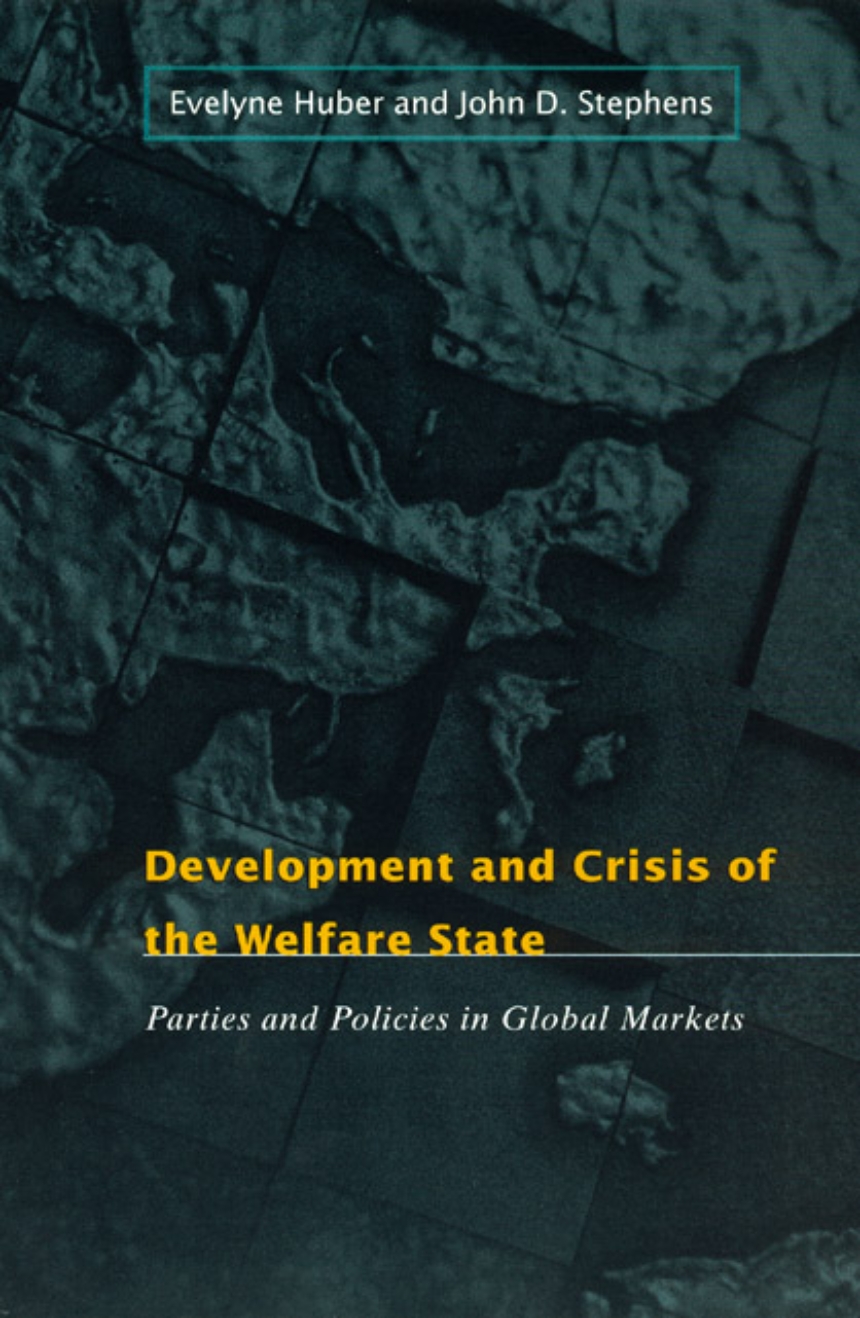Development and Crisis of the Welfare State
Parties and Policies in Global Markets
9780226356471
9780226356464
9780226356495
Development and Crisis of the Welfare State
Parties and Policies in Global Markets
Evelyne Huber and John D. Stephens offer the most systematic examination to date of the origins, character, effects, and prospects of generous welfare states in advanced industrial democracies in the post—World War II era. They demonstrate that prolonged government by different parties results in markedly different welfare states, with strong differences in levels of poverty and inequality. Combining quantitative studies with historical qualitative research, the authors look closely at nine countries that achieved high degrees of social protection through different types of welfare regimes: social democratic states, Christian democratic states, and "wage earner" states. In their analysis, the authors emphasize the distribution of influence between political parties and labor movements, and also focus on the underestimated importance of gender as a basis for mobilization.
Building on their previous research, Huber and Stephens show how high wages and generous welfare states are still possible in an age of globalization and trade competition.
Building on their previous research, Huber and Stephens show how high wages and generous welfare states are still possible in an age of globalization and trade competition.
368 pages | 28 tables | 6 x 9 | © 2001
Political Science: Diplomacy, Foreign Policy, and International Relations, Political Behavior and Public Opinion
Table of Contents
List of Tables
Preface
1. Introduction
Outline of the Argument
Methodological Contributions
Theoretical Contributions
2. Theoretical Framework and Methodological Approach
Theoretical Framework
Methodological Approach
3. The Development of Welfare States: Quantitative Evidence
Hypotheses
Operationalizations
Analytic Techniques
Results
Conclusion
4. Welfare State and Production Regimes
Welfare State and Production Regimes
The Performance of Regimes
Conclusion
5. The Development of Welfare States and Production Regimes in the Golden Age: A Comparative Historical Analysis
Paths to the Nordic Welfare State
The Christian Democratic Welfare States of Northern Europe
The Antipodean Wage Earner Welfare States
Comparative Analysis
6. Welfare State Retrenchment: Quantitative Evidence
Data and Methods
Results
Conclusion
7. The Politics of Welfare States after the Golden Age: A Comparative Historical Analysis
Changes in the International Economy and Domestic Social Structures and Their Effects
The Nordic Social Democratic Welfare States
The Northern Continental Christian Democratic Welfare States
The Antipodes
The Impact of Retrenchment
Conclusion
8. Conclusion
Summary of Arguments
Speculation and Prescription
Contributions to Theories of the Welfare State
Contributions to Theories of the State
Appendix
Notes
References
Index
Preface
1. Introduction
Outline of the Argument
Methodological Contributions
Theoretical Contributions
2. Theoretical Framework and Methodological Approach
Theoretical Framework
Methodological Approach
3. The Development of Welfare States: Quantitative Evidence
Hypotheses
Operationalizations
Analytic Techniques
Results
Conclusion
4. Welfare State and Production Regimes
Welfare State and Production Regimes
The Performance of Regimes
Conclusion
5. The Development of Welfare States and Production Regimes in the Golden Age: A Comparative Historical Analysis
Paths to the Nordic Welfare State
The Christian Democratic Welfare States of Northern Europe
The Antipodean Wage Earner Welfare States
Comparative Analysis
6. Welfare State Retrenchment: Quantitative Evidence
Data and Methods
Results
Conclusion
7. The Politics of Welfare States after the Golden Age: A Comparative Historical Analysis
Changes in the International Economy and Domestic Social Structures and Their Effects
The Nordic Social Democratic Welfare States
The Northern Continental Christian Democratic Welfare States
The Antipodes
The Impact of Retrenchment
Conclusion
8. Conclusion
Summary of Arguments
Speculation and Prescription
Contributions to Theories of the Welfare State
Contributions to Theories of the State
Appendix
Notes
References
Index
